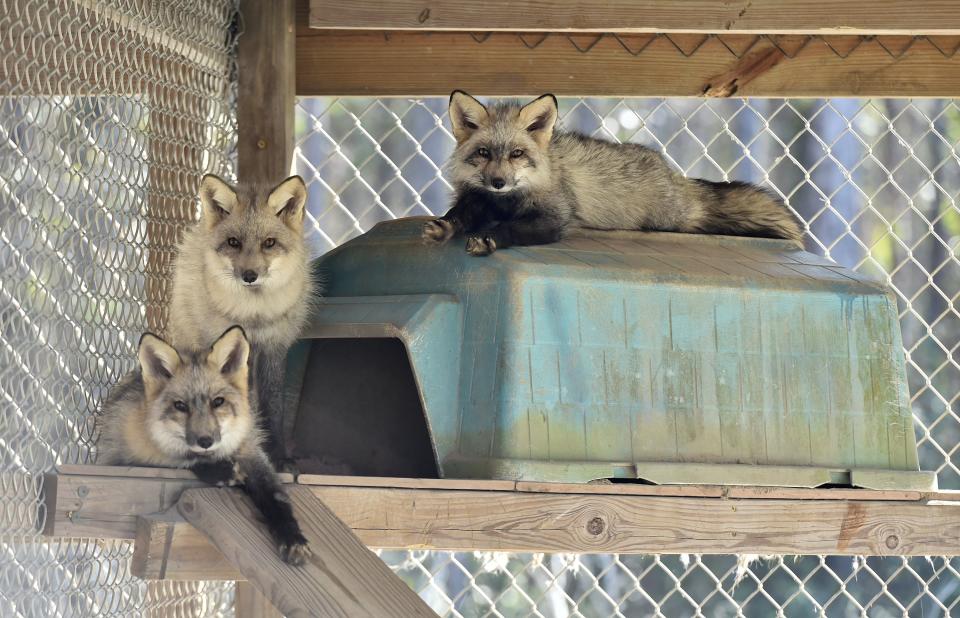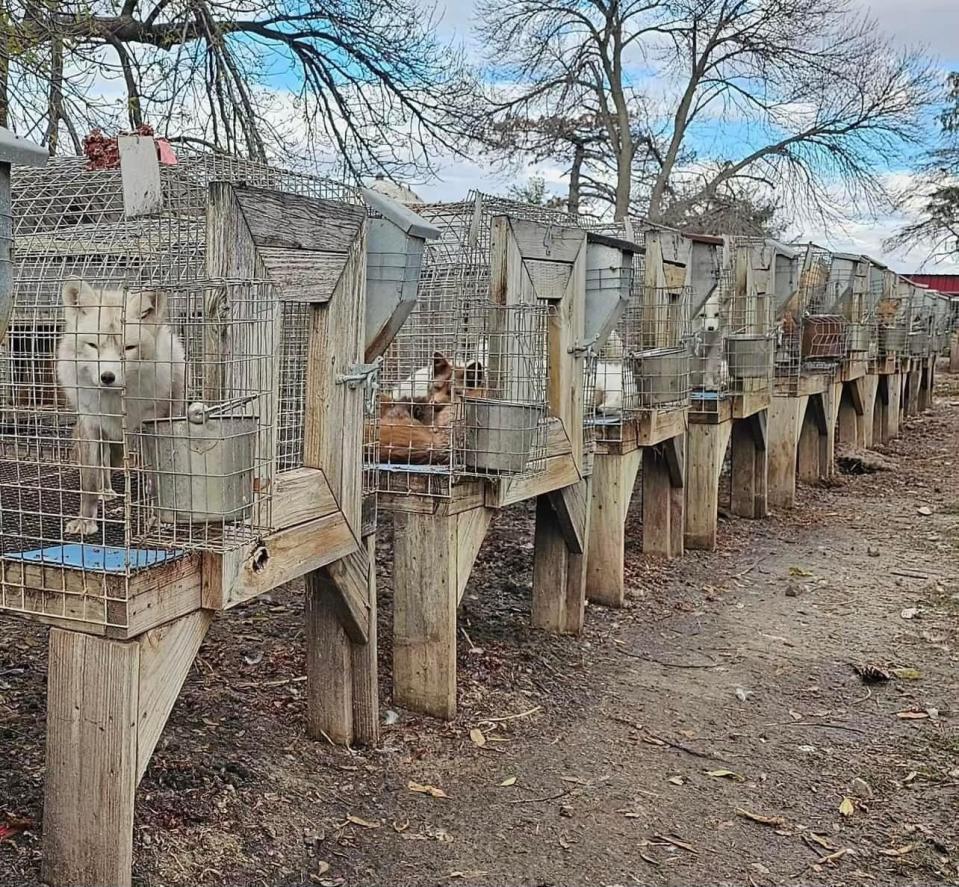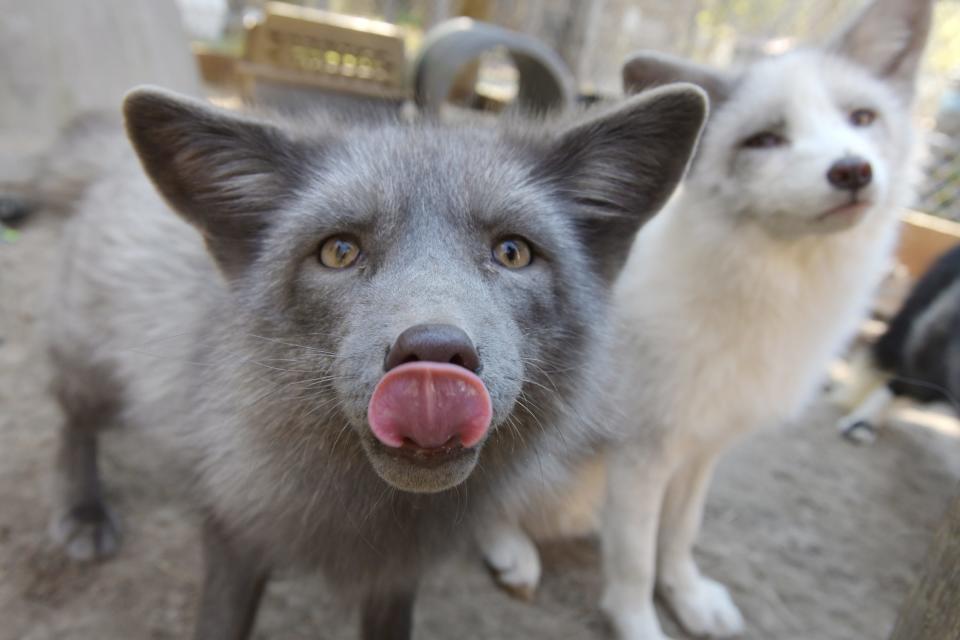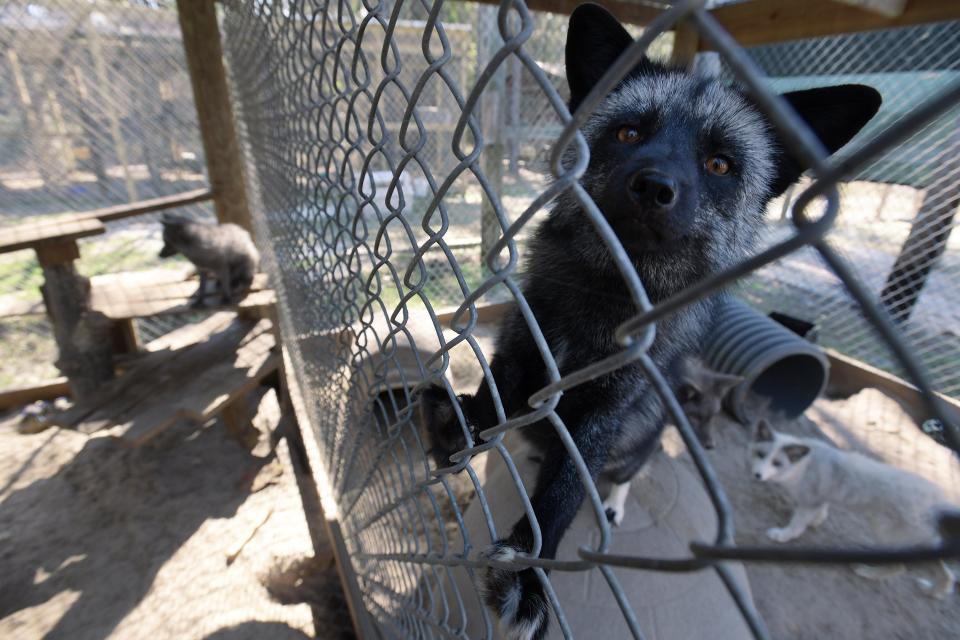Foxes rescued from fur farm have new home at Nassau County wildlife sanctuary
Jonathan Howard already had about 90 rescue animals at his Hilliard wildlife sanctuary, including deer, raccoons, foxes, skunks, otters, bobcats, squirrels, nutria, flying squirrels, emus, mini mules, sugar gliders and a rabbit-like animal called a Patagonian cavy.
But late last year SaveAFox, a Minnesota nonprofit that rescues captive-born foxes from fur farms, appealed for other licensed sanctuaries to help out with new arrivals.
So Howard added 40 — and counting — of their foxes to his Nassau County menagerie of animals that, for one reason or another, cannot be returned to the wild. It's called the Ark Wildlife Care and Sanctuary.
"That is what our facility was founded for, wildlife that needs a permanent home," Howard said.
Established in 2014, the Ark is run by volunteers led by Howard, a retired air traffic controller who spends most of his time working with the animals. The sanctuary provides housing, care and medical needs for all its animals under Florida Fish and Wildlife Conservation Commission captive wildlife permits.
Howard was a licensed wildlife rehabilitator but no longer accepts injured animals that need rehabilitation. Last year he did not renew his rehabilitation permit because of changes in how the commission works with wildlife rehabilitators.
As soon as the foxes were Florida-bound, Howard and his volunteers began building 11 new enclosures. Three of them he called "massive" — one is about 4,000 square feet, another 3,800 square feet and another 1,800 feet square. The eight smaller enclosures are designated for family units, he said.
The spacious new digs are a dramatic improvement from the foxes' former fur farm quarters.
"They were raised in pens that were approximately 3 feet wide by 6-to-8 feet long and only a few feet tall," he said. "They lived their entire life on wire elevated off the ground."
Now "they can dig and play and jump and climb."

"They were very timid when first touching the ground," Howard said. "… They were all shy and didn't really understand what was happening. Once they were here for a day or two, they began to play and bounce around."
Apart from some skin issues, they arrived in "relatively healthy" condition, he said. "They have large feet from walking with their toes splayed so not to fall through the wire when they were young."
SaveAFox was "ecstatic" when Howard agreed to help, founder Mikayla Raines said.
"The Ark reached out to us after seeing our campaign online to rescue this huge number of foxes from a fur farm," she said. "Without other rescues, zoos and wildlife centers working with us, there is no way any of this would be possible."
The public can help as well, by asking other local wildlife rescues, educational facilities and zoos to adopt SaveAFox rescues, she said.
What are fur farms?
At fur farms, animals are bred and raised commercially for their pelts, which are used in the fashion industry. Such operations are illegal in at least 15 countries, but not in Florida or most other U.S. states, although California in 2023 banned the sale and manufacturing of new animal fur products.

About 100 million animals are raised and then killed for their fur, usually by gassing or electrocution, according to the Fur Free Alliance, an international coalition of more than 50 animal protection organizations. They include mink, foxes, raccoon dogs, rabbits and chinchillas, according to the alliance.
The number of fox fur farms in the U.S. is uncertain since there are "no reporting agencies," according to SaveAFox. But the group estimated there are about 150 active fur farms nationwide, with about 100 of them breeding minks and 50 breeding foxes. An online source, all-creatures.org, said there are about 56 fox fur farms in 10 states.
About 85% of fur available for purchase comes from "animals living in the fur industry with the fox being one of the most commonly used," according to SaveAFox.

"Most of the fur farm foxes at SaveAFox are given to us because they are orphaned, have imperfect coats, [or are] sick or injured and therefore a liability or of no value to a fur farmer," according to a statement by Raines on the website.
The Minnesota sanctuary also takes in foxes surrendered by owners who did not understand "how extremely difficult they are to care for" as pets or were seized by authorities after being kept illegally, according to the statement. "You can still help bring an end to the fur industry simply by not buying fur."
What's the future for the new Ark foxes?
Since they were born in captivity, the foxes cannot be released into the wild because they don't have the skills to survive. But the average life span of a captive fox is 10 to 12 years, so the Ark is seeking public support for their care.
"Our estimated cost for just food and water for a healthy fox for 10 years is $3,800," Howard said. "We are still a 100% volunteer operation without one paid or compensated employee. Our hopes are to be able to hire one part-time employee to assist."

A donor to finance that position "would be making a huge impact to these animals and our operation," he said. "An employee would allow our outreach and education program to grow and allow more time for interaction with the individual animals."
Donations are also welcome to help care for the other animals at the Ark, most of which were surrendered by owners "based on word of mouth and our reputation for care and housing," he said. The existing residents include blind deer, three-legged deer, blind raccoons and amputee raccoons.
Howard is in it for the long haul, having seen the results.
"To see the joy these animals get from playing and responding to us is priceless," he said. "To be able to provide a home to deer born without eyes who would not live more than a week or two in the wild is like nothing else."
bcravey@jacksonville.com, (904) 359-4109
HOW TO HELP
The Ark Wildlife Care and Sanctuary: To donate, volunteer or get more information, contact founder Jonathan Howard at 781 Carlee Lane, Hilliard, FL 32046; (904) 424-6543; or thearkwildlifecare@gmail.com or go to thearkwildlifecareandsanctuary.com. But don't be confused by the website calling itself Otter Space Wildlife. That is the Ark's official new name — what the nonprofit does business as with the state — to "alleviate the confusion of how many Ark Wildlife facilities there are," Howard said. But the Ark name will "continue for the time being."
SaveAFox: To donate or get more information, email SaveAFox@yahoo.com or go to saveafox.org.
This article originally appeared on Florida Times-Union: Nassau County wildlife sanctuary takes in foxes rescued from fur farm

